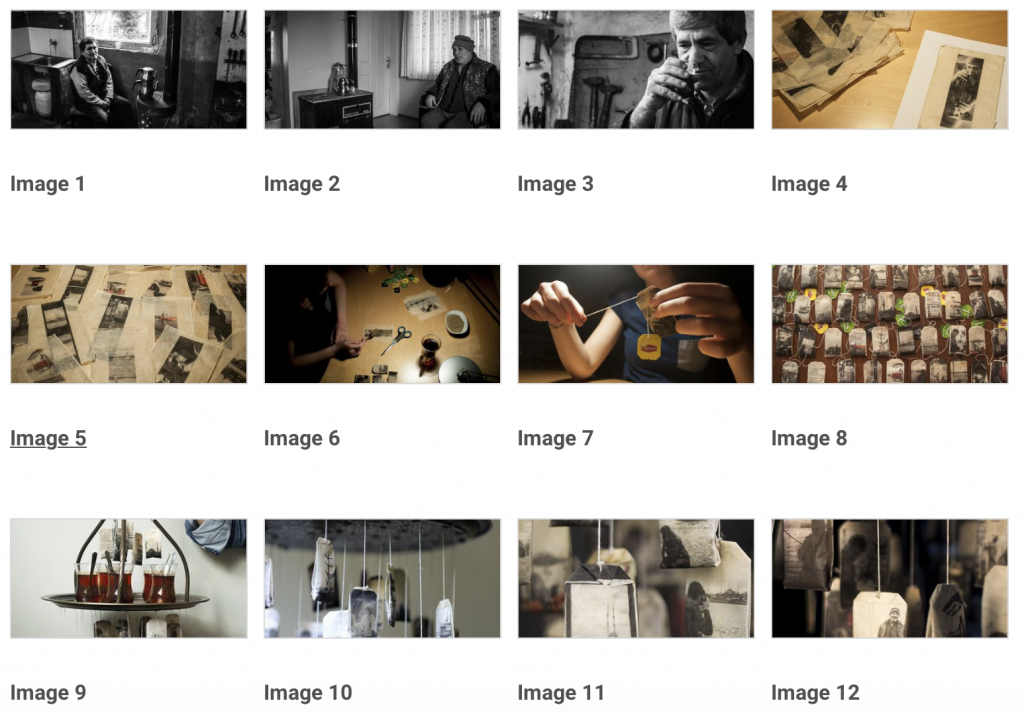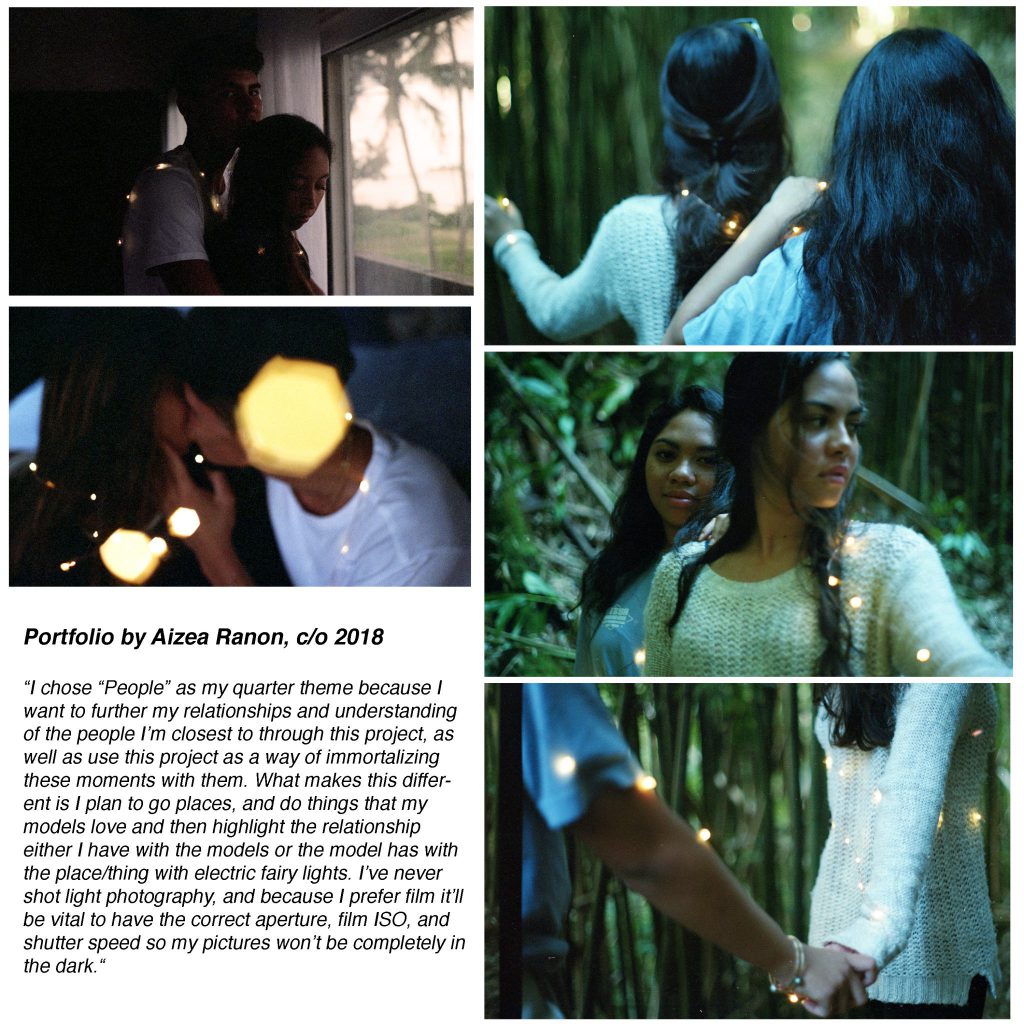For 2nd Quarter of class, you guys get to choose a Theme and explore it in 2 different ways. The idea is to investigate in-depth a visual/conceptual idea over the course of the quarter from two different approaches. What you do and how you do it is up to you, but working with this theme for the quarter is supposed to encourage the following:
- experimentation and risk taking,
- development of vision over a period of time
- growth in terms of technical competence and skill with materials (cameras, darkroom/lighting equipment, Photoshop, printers, etc)
- refined awareness of lighting and composition
- purposeful visual communication
Now, you might be asking yourself, “Where on Earth does Ms. Ua come up with this stuff???” Well, this is based on how the scoring guidelines that College Board uses when grading portfolios by AP Studio Art students. While KS doesn’t offer an AP studio art course, as Independent Study students, you could technically be working at the same level as AP students. College Board looks at the following things when rating portfolios:
- The Ranges of Approach, or how you approach an idea from different perspectives, techniques, materials, etc.
- The Quality of your work, especially in the selection of which pictures you choose in your final portfolio. You shoot at least 40-80 pictures for each project, but you only choose 4-5 of them to print up. Why do you choose these specific pictures, and are they in fact the best pictures to communicate you idea?
- The Concentration or Sustained Investigation of your theme. College Board wants to see an in-depth investigation into an idea that shows you’ve spent time considering, developing, and creating with this idea in mind. They want to see growth!
Yes, obviously, you’re NOT in AP, but it’s good to look at what other student artists (like yourselves) are working on and working toward. College Board has examples of high-scoring work with rational about why these projects are successful. You should check them out: HERE is one, HERE is another, and THIS one I really like too. Actually, I’ll include some specific ones below under Inspiration while I’m at it. Look through some of their work and see what makes a portfolio successful and work toward that throughout this quarter.
The first challenge, obviously will be to decide on a theme. To do this, look back at your work from Q1 (and from Photo 1 and Photo 2) and see what you enjoyed shooting, what you felt passionate about, and what else you want to explore more thoroughly. What ideas have you been encountering in your other classes (or in life in general) and how can you tie that into photo? Once again, at the end of the day, this theme should be something meaningful to you because you will be working on it for the rest of the semester. Work on your project proposal!
Once you’ve chosen a theme (or a couple themes), START SHOOTING to help refine your idea. Each project will follow the same 3-week time frame that we’ve been working with.
- Week 1: Complete & submit your Project Proposal
- Week 2: Submit 1 Contact Sheet that shows your preliminary exploration of ideas
- Week 3: Submit a 2nd Contact Sheet and your final prints
WHAT TO TURN IN:
- 2 contact sheets (40 digital pictures per contact sheet)
- 5 final/edited pictures
AP STUDENT WORK:
The above student artist wrote the following about her portfolio:
-
My concentration is a study of abstract forms captured from interior and exterior architecture. I focus primarily on line, shape, and light to create images that separate the viewer from an ordinary sense of reality. The central aim of my concentration is to transform mundane spaces, revealing an abstract aesthetic dimension.
-
I began my project by photographing architectonic spaces, concentrating on the relationship between light and shape in an abstract context. Specifically, the photographs utilize varying sources of light to create gradients within the negative space (most evidently in Images 3, 5, 6, 11). Having this wide range of values, from light to dark, allows each image to hint at three-dimensionality while still composed of relatively simple geometric shapes (Image 1). Similarly, I particularly set out to frame compositions that contained a hierarchy of various shape sizes, as doing so further accentuates the scale of space in each image (Images 9 and 12). Also, most images are seen rotated from their original vantage point, to guide the viewer away from their representational aspect. Further, compositional devices such as symmetry (Images 7 and 8) and geometric repetition (Images 2 and 4) serve to reinforce this movement towards abstraction. Overall, the goal of my concentration was to create a set of images that reconstruct the ordinary physical spaces that surround us, allowing the viewer to think about the ways in which they can see the world from a different, more abstract frame of mind.
This student wrote the following for their photography portfolio:
Tea as a metaphor for the power that bonds people with different cultures in the city of Istanbul. I took documentary photographs (images 1-3). I printed many of the photos on tea bags using my home printer (images 4, 5). I then reassembled up the printed tea bags (images 6, 7) and then displayed them in a final performance (images 8-12).
To find people’s stories I went down to couple of places and knocked on the doors of people I don’t know to ask if I could take some photographs. The common words they said was “Come in, I have tea.” At that moment I knew the element I was looking for was tea. I’ve been living in Istanbul for 18 years and I can’t think of a moment that there is no tea boiling in the teapot on our cooker. The political, social and economic boundaries that separate the people of my city cease to exist when people are sharing tea. The faces of Istanbul, urban and rural, are settled in the same area, with no single boundary that separates them. The only reason I managed to meet a bus driver living in a village outside of Istanbul as well as a repairman living in the middle of Istanbul was the idea of sharing tea with them. Regardless of the differences in their stories, I presented the photos of those people together on tea bags with photos of Istanbul.
PREVIOUS KS STUDENT WORK:





